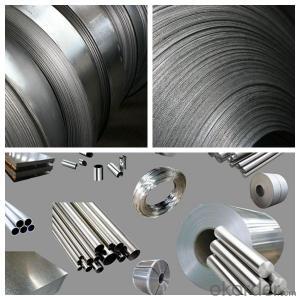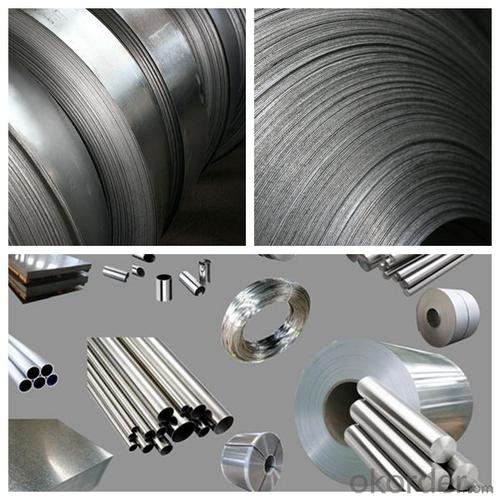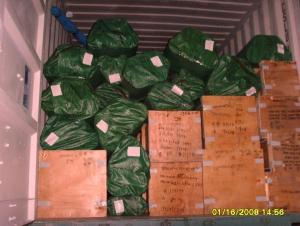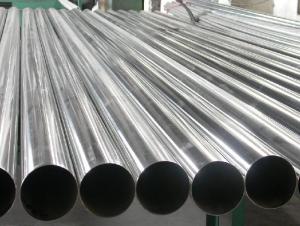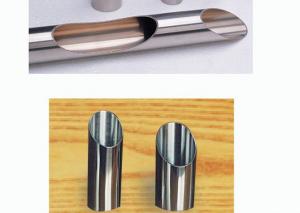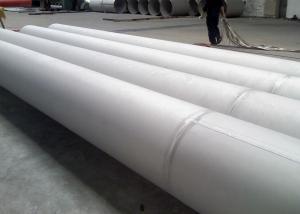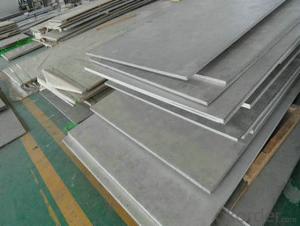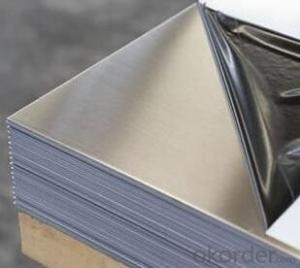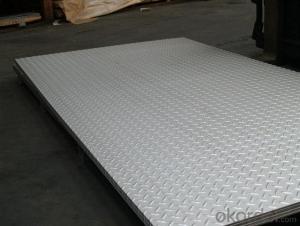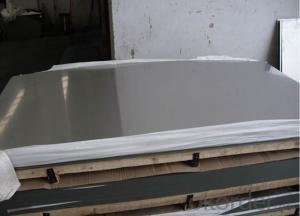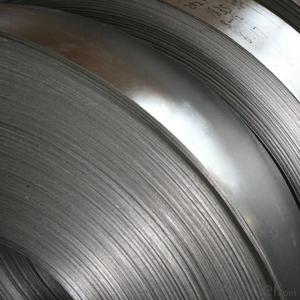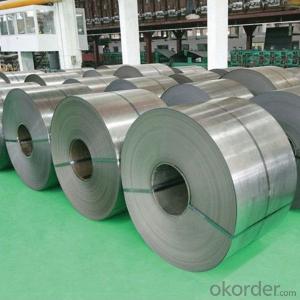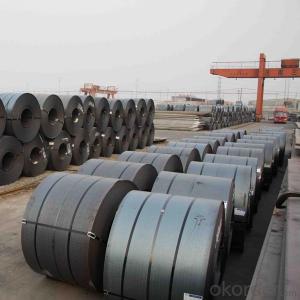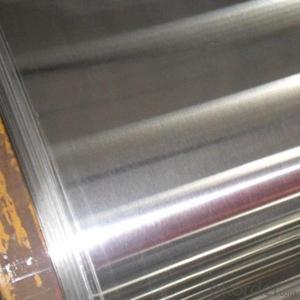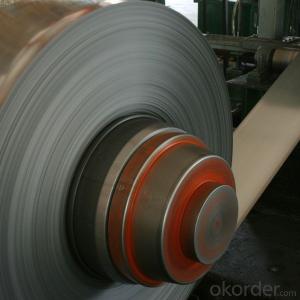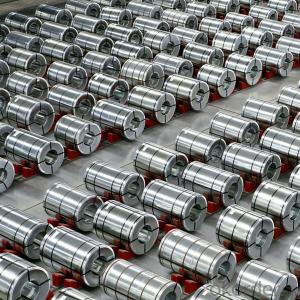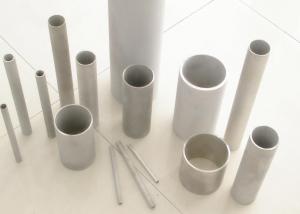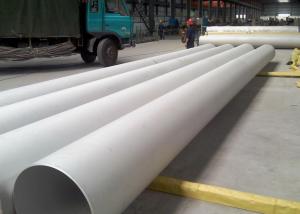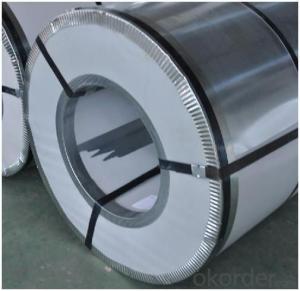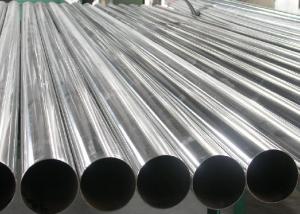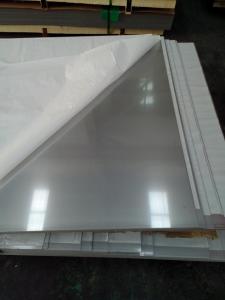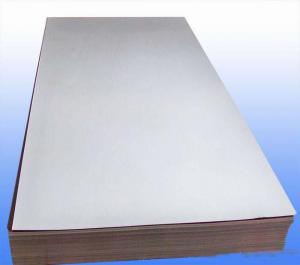Hot Rolled Stainless Steel 304 NO.1 Made in China
- Loading Port:
- China main port
- Payment Terms:
- TT OR LC
- Min Order Qty:
- 100000 m.t.
- Supply Capability:
- 100000 m.t./month
OKorder Service Pledge
OKorder Financial Service
You Might Also Like
Specification
Products Description
Name: stainless steel coils/plates/sheets
Discharge Port: Any Port, China
Cold Rolled Size: thickness0.3-8mm,Width:280-2100mm
Hot Rolled Size: Thickness3-14mm,Width:650-2100mm
Hot Rolled/Cold Rolled Plates : Thickness2-80mm,Width:1500-3000mm
Coil Weight: About 20 Tons
Grade: 201,202,304/304L/304H, 316/316L/316H, 409/L,430 etc.
Technique: Hot Rolled/Cold Rolled
Finish:2B, BA, 2D, No1, No2 etc
Edge: Mill Edge / Slitting Edge
Packaging: In bundles, or as customer's requirement
Place of Origin: Made in China
MOQ: 20 Tons
Payment Terms: 100% LC at sight, or 100%TT in advance
Delivery Time: With 30-40 days after deposit
Features of Stainless Steel Coils
(1) Good ductility
(2) Good corrosion resistance
(3) Excellent abrasion resistance and fatigue strength
(4) Good weldability
(5) Oxidation resistant performance
(6) Excellent in high temperature
Packaging & Delivery
Packaging Detail Standard export packing or following customer's demand
Delivery Time: Within 30-40 days after deposit or according to the order quantity
Application of Stainless Steel Coils
(1) Boiler heat exchanger,
(2) Chemical industries,
(3) Hardware fields,
(4) Construction material,
(5) Kitchen utensils,
(6) Building construction,
(7) Medical equipment,
(8) chemical tank,
(9) pipe etc
Payment&Delivery
Payment Terms | 100% LC at sight,or 30%TT in advance, balance against B/L copy |
Delivery Time | With 30-40 days after deposit |
Price Terms | Ex-Work, FOB, CNF, CFR, CIF,etc |
Detail picture of Products:
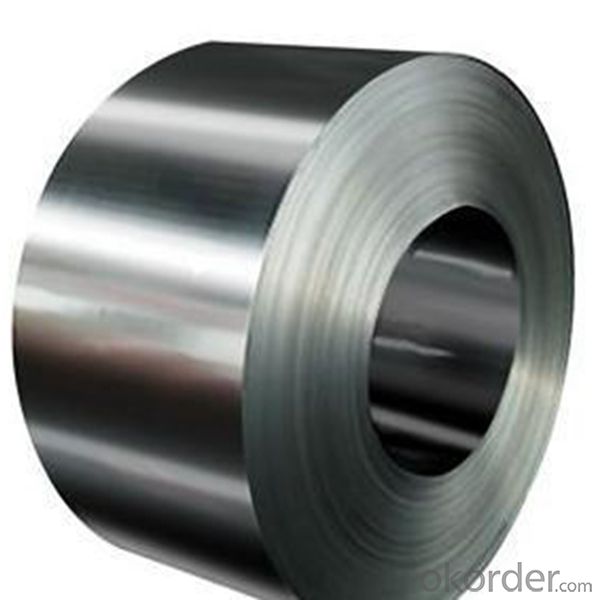
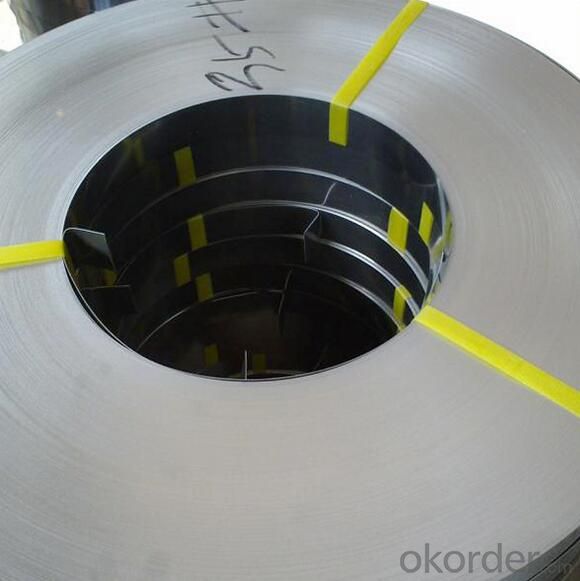
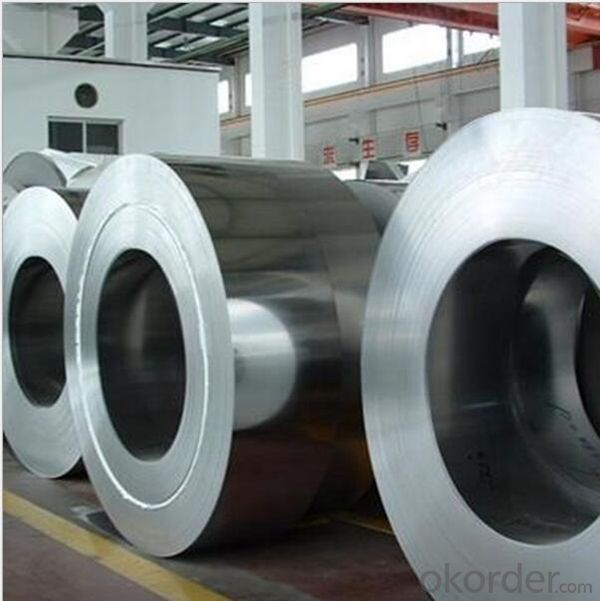
Export Markets
Our target market is the international market. Every year we export most of products to countries like India, Pakistan, South Korea, Brazil, Australia, South Africa, Spain, Sri Lanka, Taiwan, Hong Kong, etc.
FAQ
Q: How long is the delivery time?
A: Normally 30-40 days, but mostly according to the specific requirements or the quantity
Q: Could you send me sample?
A: We can supply you with the sample for free, but the delivery charges will be covered by customers.
- Q: How do you prevent discoloration on stainless steel sheets?
- There are several steps you can take to prevent discoloration on stainless steel sheets. Firstly, it is essential to clean the surface regularly. Use mild soap or detergent with warm water and avoid abrasive cleaners or scrubbing pads that can cause scratches. Secondly, avoid using harsh chemicals or cleaners that contain chlorine, bleach, ammonia, or acids. Stick to mild and non-abrasive cleaners specifically made for stainless steel. After cleaning, make sure to rinse the sheet thoroughly with clean water to remove any residue from the cleaning solution. Residual chemicals can cause discoloration if left on the surface for too long. It is important to dry the stainless steel sheet completely after cleaning and rinsing. Moisture left on the surface can lead to water spots or staining, especially in areas with hard water. Use a soft cloth or towel to remove all moisture and ensure a dry and shiny surface. Applying protective coatings or sealants designed for stainless steel can help prevent discoloration. These coatings create a barrier that protects the surface from environmental factors like humidity, oxidation, and staining. Proper handling and care are also crucial. Avoid dragging or sliding objects across the sheets to prevent scratches or abrasions that may lead to discoloration. Handle the sheets with care, using clean gloves or a soft cloth to minimize the risk of surface damage. Regularly inspect the stainless steel sheets for any signs of discoloration or damage. Address any issues promptly by following the appropriate cleaning and maintenance procedures to prevent further damage and maintain the appearance of the stainless steel. By following these preventive measures, you can effectively minimize discoloration on stainless steel sheets and keep them looking clean, shiny, and free from stains for a longer period of time.
- Q: Can stainless steel sheets be used for fermentation tanks?
- Fermentation tanks can indeed utilize stainless steel sheets. The reason behind this preference lies in stainless steel's durability, resistance to corrosion, and capability to maintain the desired temperature. Its non-reactive nature guarantees the purity and quality of the product by preventing any interaction with the fermenting substances. Furthermore, stainless steel's easy-clean and sanitize properties are vital in ensuring hygienic conditions throughout the fermentation process. On top of all that, stainless steel sheets can be shaped and sized according to specific requirements for fermentation tanks. Consequently, stainless steel sheets are a dependable and popular choice in multiple industries, including brewing, winemaking, and food processing.
- Q: Are stainless steel sheets suitable for elevator wall panels?
- Yes, stainless steel sheets are suitable for elevator wall panels. Stainless steel is a popular material choice for elevator wall panels due to its durability, corrosion resistance, and aesthetic appeal. Elevators are high-traffic areas that require a material that can withstand constant use and potential impact. Stainless steel sheets are robust and can withstand wear and tear. Additionally, stainless steel is highly resistant to corrosion, making it suitable for environments with high humidity or exposure to chemicals. Furthermore, stainless steel has a sleek and modern appearance that adds a touch of elegance to the elevator interior. Overall, stainless steel sheets are a reliable and aesthetically pleasing choice for elevator wall panels.
- Q: What are the different types of stainless steel sheet perforations available?
- There are several different types of stainless steel sheet perforations available, each with its own unique characteristics and applications. Some of the most common types include: 1. Round hole perforations: These are the most basic and widely used type of perforations. They are simple round holes evenly spaced across the sheet, providing good airflow and visibility. 2. Square hole perforations: Similar to round hole perforations, square holes offer a different aesthetic and can also be used for ventilation or decorative purposes. 3. Slotted perforations: Slotted holes are elongated and provide a larger open area compared to round or square holes. They are often used for drainage or filtering applications. 4. Hexagonal hole perforations: Hexagonal holes offer a unique pattern and are commonly used for architectural or decorative applications. They can also provide good airflow and visibility. 5. Decorative perforations: These types of perforations come in various shapes and designs, including floral, geometric, or abstract patterns. They are typically used for decorative purposes in applications such as building facades or interior design. 6. Micro-perforations: These are very small holes, typically less than 1mm in diameter. Micro-perforated sheets are used in applications where high precision and fine filtration are required, such as speaker grills or air diffusers. It's important to consider the specific requirements of your application when choosing the type of perforation. Factors such as open area, strength, visibility, and aesthetics should all be taken into account to ensure the best perforation choice for your specific needs.
- Q: What is the maximum temperature stainless steel sheets can withstand?
- The maximum temperature stainless steel sheets can withstand depends on the specific grade of stainless steel. Generally, most stainless steel grades can withstand temperatures up to around 1500°F (815°C) before experiencing significant oxidation or scaling. However, certain high-temperature grades of stainless steel, such as 310 or 321, can withstand temperatures up to 2100°F (1150°C) or even higher. It is important to consider the specific application and grade of stainless steel when determining the maximum temperature it can withstand to ensure optimal performance and durability.
- Q: What are the different types of stainless steel sheet finishes for food processing applications?
- Various types of stainless steel sheet finishes are commonly used in food processing applications. 1. Achieved through hot rolling, the No. 1 Finish leaves the stainless steel sheet with a rough surface. Due to its lack of smoothness, it is not typically used in food processing applications as it can harbor bacteria. 2. The No. 2B Finish, on the other hand, is a smooth and reflective finish achieved through cold rolling and annealing of the stainless steel sheet. This finish is commonly used in food processing applications as it is easy to clean and maintain. 3. If a brushed appearance is desired, the No. 4 Finish is achieved by creating a uniform grain on the surface using abrasive materials. This finish is often used in food processing applications where a decorative or aesthetic finish is desired. 4. For the most reflective finish available, the No. 8 Mirror Finish is achieved by polishing the surface until it becomes highly reflective and mirror-like. This finish is often used in food processing applications that require a high level of cleanliness and hygiene. Aside from these finishes, there are also specialized finishes such as bead blasted, patterned, and embossed finishes that can be used in food processing applications to meet specific aesthetic or functional requirements. Ultimately, the choice of finish will depend on the specific needs of the food processing application, including factors such as hygiene, ease of cleaning, and aesthetic considerations.
- Q: Can stainless steel sheets be used for HVAC systems?
- Certainly! HVAC systems can utilize stainless steel sheets. Due to its exceptional resistance to corrosion, durability, and ability to withstand high temperatures, stainless steel is a favored material for HVAC systems. It finds frequent application in various HVAC components, including ductwork, vents, and heat exchangers. Stainless steel sheets offer a sleek and hygienic surface, safeguarding air quality by preventing the accumulation of dust, dirt, and other pollutants. Moreover, stainless steel is effortlessly cleaned and maintained, rendering it an ideal option for HVAC systems demanding regular upkeep and cleaning.
- Q: Are stainless steel sheets environmentally friendly?
- There are multiple reasons why stainless steel sheets are considered environmentally friendly. Firstly, stainless steel is an incredibly durable and long-lasting material. Unlike plastic or wood, stainless steel sheets have a lifespan of several decades and do not easily deteriorate. This means that they do not need frequent replacement, resulting in reduced waste production. Moreover, stainless steel is entirely recyclable. When it reaches the end of its life cycle, stainless steel can be melted down and used to create new products without losing any of its original properties. This significantly decreases the demand for raw materials and reduces the energy required for manufacturing new items. Additionally, stainless steel sheets are non-toxic and do not release harmful chemicals into the environment. Unlike certain plastics or treated woods, stainless steel does not emit VOCs or other pollutants that can contribute to air or water pollution. Furthermore, stainless steel is corrosion-resistant, requiring minimal maintenance and eliminating the need for chemicals or coatings to protect it from rust or degradation. This reduces dependence on environmentally harmful substances and minimizes the release of pollutants into the environment. In conclusion, stainless steel sheets are environmentally friendly due to their durability, recyclability, non-toxic nature, and resistance to corrosion. These characteristics make stainless steel a sustainable and responsible choice for various applications, ranging from construction to household appliances.
- Q: Can stainless steel sheets be used for fire escapes?
- Indeed, fire escapes can utilize stainless steel sheets. Stainless steel, known for its remarkable durability and resistance, exhibits the ability to endure elevated temperatures and retain its structural integrity when confronted with fire. This material, free from combustible properties, abstains from emitting hazardous gases when subjected to heat, thereby establishing itself as a secure option for constructing fire escapes. Moreover, the corrosion resistance inherent in stainless steel guarantees the longevity and dependability of the fire escape system. Ultimately, stainless steel sheets emerge as an exceptional selection for fire escapes due to their robustness, fire resistance, and durability.
- Q: Can stainless steel sheets be used for elevator cabins?
- Yes, stainless steel sheets can be used for elevator cabins. Stainless steel is a durable and corrosion-resistant material, making it suitable for high-traffic areas like elevator cabins. Additionally, stainless steel has a sleek and modern appearance, making it a popular choice for elevator interiors.
Send your message to us
Hot Rolled Stainless Steel 304 NO.1 Made in China
- Loading Port:
- China main port
- Payment Terms:
- TT OR LC
- Min Order Qty:
- 100000 m.t.
- Supply Capability:
- 100000 m.t./month
OKorder Service Pledge
OKorder Financial Service
Similar products
Hot products
Hot Searches
Related keywords
